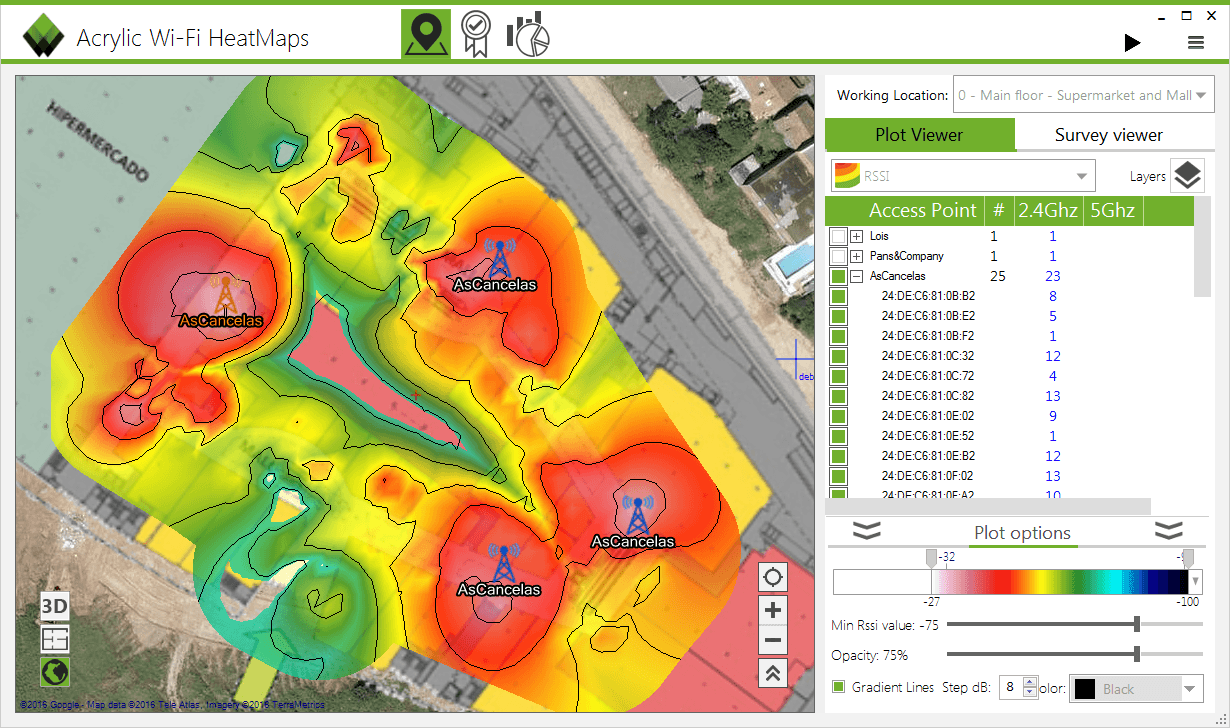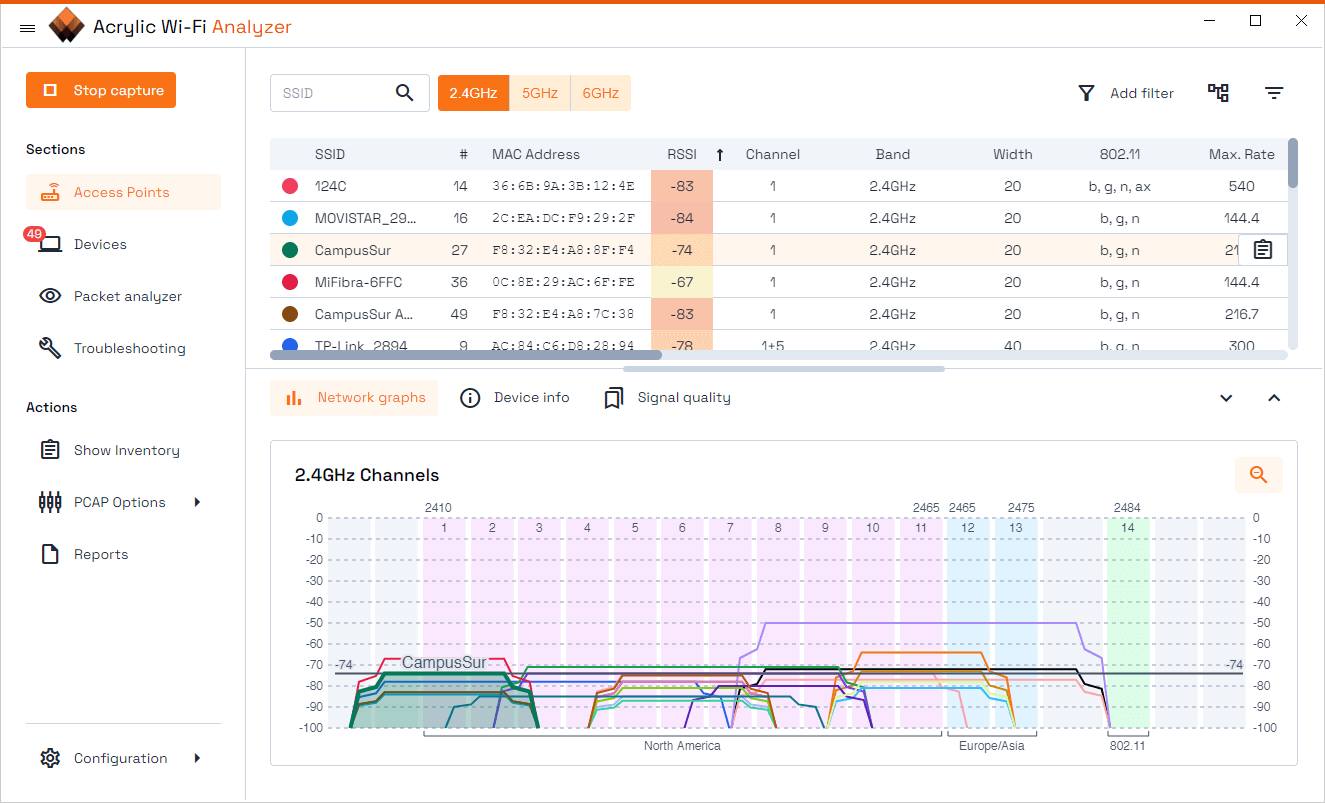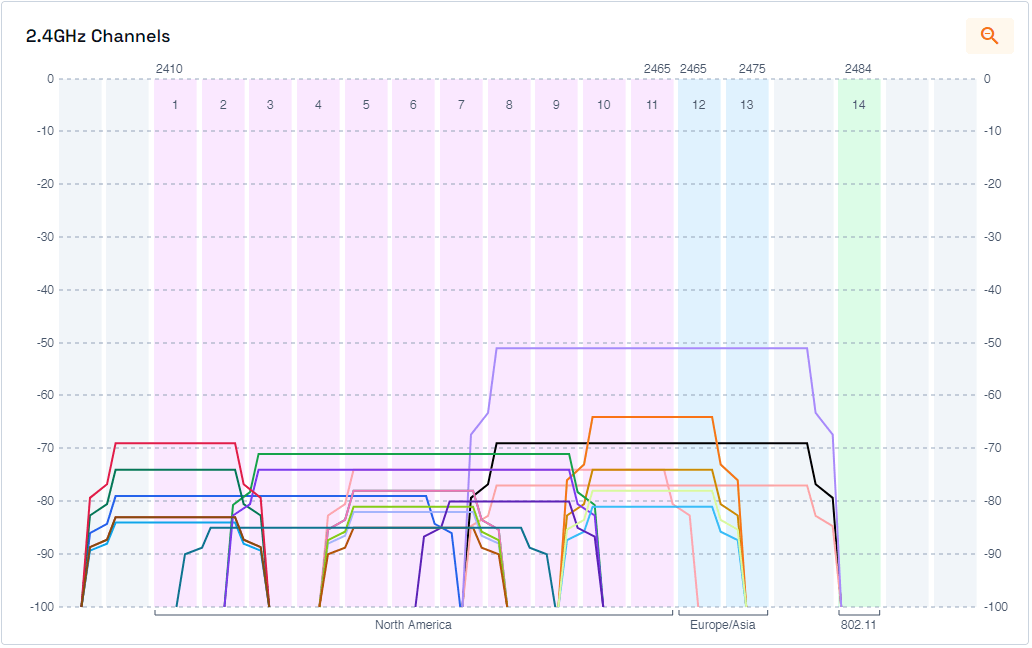How to improve WiFi Performance and Coverage
Table of Contents
WiFi performance is affected by a number of internal, external, or design factors, such as signal interference. Here are some tricks to improve overall network performance and coverage.
Improve Your WiFi Performance and Coverage with Non adjacent Channels
2.4Ghz WiFi channels overlap, degrading WiFi performance and wireless signal. Whenever possible, access points should operate on nonadjacent channels, for example, channel 1, 6, and 11. Channel selection is particularly important in environments with a high access point density.
If the WiFi access point supports a 5Ghz frequency band, such as 802.11ac, it is recommended to use this frequency band, since it is less saturated and has more available channels. The coverage area on 5Ghz is smaller but the network performance is better.
Avoid Same-Channel WiFi Network Overlapping
WiFi networks operating on the same channel compete for the transmission environment, therefore two different access points cannot operate at the same time. If two different WiFi networks are required to coexist on the same channel, there should be at least a 20dbm frequency difference between them to avoid congestion.
Enable Qos on your Access Points
If the access point supports QOS, along with 802.11e, this functionality must be enabled to prioritize traffic. This is particularly relevant to those applications requiring a short response time over a WiFi network, such as VoIP applications.
Perform a WLAN Site Survey to Reveal WiFi Coverage
WiFi networks should ideally maintain a signal strength of at least -60dbm to -65dbm for optimal communication. At lower performance values, the transmission signal is degraded to the point in which VoIP communications are no longer viable. A deficient coverage area results in high retry packet rates on client devices, which, in turn, degrades overall network performance.
A WLAN site survey should be performed to analyze network coverage throughout the site. Acrylic Wi-Fi Heatmaps allows you to generate network coverage maps while specifying image transparency once the selected coverage threshold is exceeded, for example -65dbm.

Measure Packet Loss Rate
Network performance is usually reduced by a retry packet rate close to or over 10%. This deficiency could be caused by frequency interference or screened devices.
Perform a Network Planning and Deployment Analysis
Install your access points strategically to maximize network coverage. It is recommended to perform a network performance diagnosis prior to the wireless network deployment.
You can obtain information on the number of forwarded packets and the speed of the Wi-Fi access point with our Wi-Fi Analyzer.
This article is part of a series of articles about WiFi setup for teleworking and small offices

